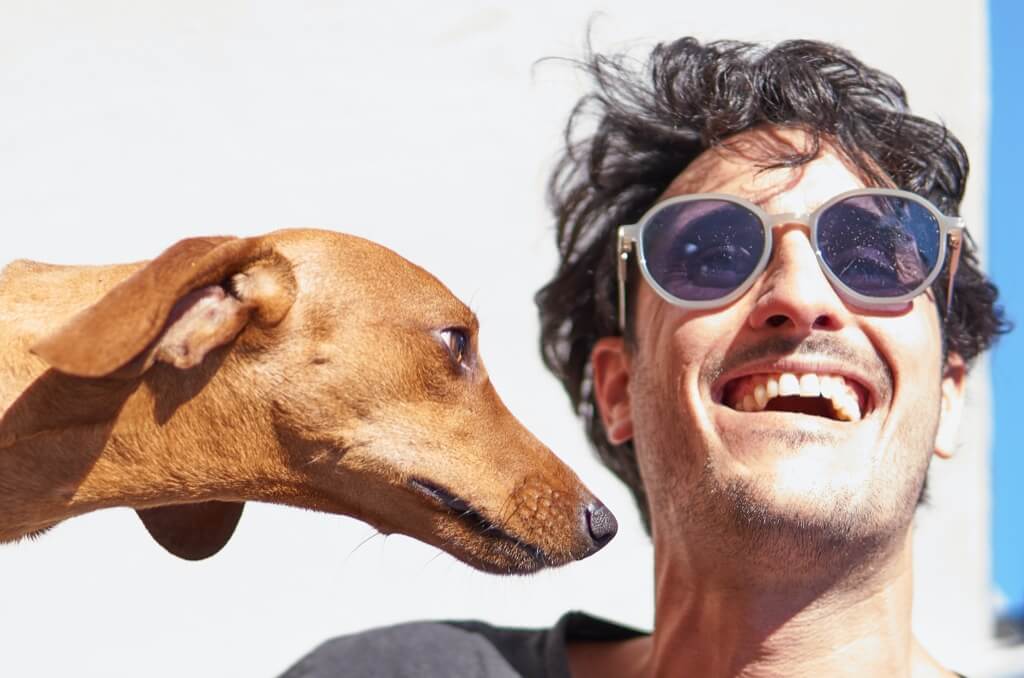
Heroic, composed, and fearless, the first humans sent into space exhibited all three traits. In addition to not being human, several of them had fur. Yes, humanity did test the viability of space travel with fruit flies, monkeys, and dogs before Apollo 13, before Buzz Aldrin, Neil Armstrong, and Yuri Gagarin. These experiments contributed to the body of evidence showing that humans may survive space travel with appropriate safety measures. This is the underappreciated backstory of these adorable space explorers.
The first artificial object to reach the so-called space fringes was the German V-2 rocket. In May of 1944, this enormous rocket made its maiden test flight. As soon as it achieved success (by historical standards, at least), it was immediately sent to war. The city of London was bombarded with V-2 rockets by Nazi Germany in August 1944.
After the war ended, the Allies realized these V-2 rockets could do a lot of damage, so they searched the globe for spare parts and German scientists and engineers who could put them together. It turned into a race between the US, the Soviet Union, and Britain to determine who could improve upon the V-2 the fastest. A question of national security arose as the Cold War escalated between the United States and the Soviet Union. (Refer to: What Caused the Ice Age to Begin and Finish?)
Just twenty-two months after Germany’s capitulation, on February 20, 1947, the US launched a seized V-2 rocket carrying fruit flies. The initial Earthly organisms to reach space, apart from germs, were these fruit flies. The rocket took three minutes and ten seconds to travel from its launch point in New Mexico to an altitude of approximately 68 miles, passing past the Karman line, during its suborbital mission. The goal of this experiment was to find out how organisms react to extremely rapid acceleration and cosmic radiation. The fruit flies were discovered to be alive and well when the scientists recovered the rocket.
The U.S. stepped it up a notch sixteen months later in June of 1948 by sending rhesus monkey Albert on a journey on a V-2 rocket. He was put in the nose of the V-2, which could only go up to 39 miles in the air, after being anesthetized and weighing nine pounds. The unfortunate news is that scientists and his human handlers thought he had already died from suffocation in the tiny capsule before takeoff. The rocket had a rough landing regardless of his condition because the parachute system failed. The “Albert project” became the descriptor for all future American monkey experiments, so at least the name “Albert” survived.
The United States made another attempt nearly one year after that. On board a V-2, they launched yet another rhesus monkey, fittingly called Albert II. They were more generous this time, giving him a roomier, less claustrophobic environment. He became the first primate to go into space after reaching an altitude of 83 miles while under anesthesia. He survived for nearly the entire flight, but he died on contact because the parachute didn’t open correctly.
A new generation of “biological objects” carried into orbit by the Soviet Union was being planned at roughly the same time. Soviet plans to send dogs into space were shrouded in secret owing to spies’ fears; not even many of the scientists involved in the project knew the full story. The group they were assigned to, “future space scouts,” chose dogs based on more pragmatic and economical considerations than on scientific evidence. To begin with, as Vladimir Yazdovsky, director of the Institute for Aviation Medicine’s biological program for space research in Moscow, will later say:
Because of their highly researched psychology, high adaptability to teaching, excellent linguistic abilities, and sociability, we chose dogs as our biological objects.
They were inexpensive, numerous, and practical. It wasn’t hard to find strays in Moscow that would fit the space program’s exacting standards because the city was overrun with dogs. For the publicity, which relied heavily on images, the dogs had to be adults, healthy, and weigh thirteen to fifteen pounds. They also had to be female and of mixed breed, with a light coat color to make them more photogenic. (The gender of the dog had no bearing on how well the suit and hygiene gear fit.)
As a means of preparing the pups for space travel, their kennels were gradually shrunk to simulate the cramped quarters they would experience in orbit. A clumsy “sanitation device” was among the many suits, devices, and gear they had to acclimate to. They were given a high-energy gelatinous diet consisting of beef fat, powdered meat, and bread crumbs.
A lot of the dogs just couldn’t handle it and weren’t permitted to train because of it. Constipation and kidney failure were among the many subsequent health problems experienced by those who did.
The inaugural canine mission, which included Dezik and Tsygan (meaning “Gypsy” in Russian), reached a height of 62 miles in 1951. The parachute opened properly upon return to Earth. Barking met the scientists as they opened the hatch. The first sentient beings to emerge from space unscathed were Dezik and Tsygan; they were the first non-flying creatures to do it.
Advancements in Space Exploration Technology
Reflecting on these animal-driven space missions offers insights into the early stages of space exploration. The data gathered from fruit flies, monkeys, and dogs in space trials laid the groundwork for developing safety protocols and life support systems crucial for human space travel. The lessons learned from these animal pioneers continue to shape spacecraft design and astronaut safety measures today.
Ethical and Moral Considerations
The ethical dimensions of using animals for space research continue to provoke discussion. While these missions contributed to scientific progress, ethical questions persist regarding the treatment and sacrifice of these animal astronauts. The evolving ethical landscape prompts reflection on the balance between scientific advancement and ethical considerations in future space exploration endeavors.
Inspiration for Future Research and Innovation
The courage displayed by these animal astronauts inspires future generations of space scientists. Their sacrifices and contributions serve as a reminder of the challenges and triumphs of early space exploration. As you delve into space exploration’s future, consider the inspiration drawn from these brave pioneers, propelling humanity toward new frontiers in space.
Biological Adaptation in Space
The invaluable insights gained from these missions continue to inform our understanding of biological adaptation to space environments. The resilience displayed by these animals under extreme conditions offers valuable data for studying the effects of space travel on living organisms. This knowledge remains critical for planning and executing long-duration human space missions, providing insights into biological adaptation beyond Earth’s confines.
Animals In Space…..The Statistics
- Over 30 different species have been sent into space since the beginning of animal testing in the 1940s. Beyond the commonly known dogs, monkeys, and fruit flies, various creatures, including mice, turtles, rabbits, and even insects like ants and bees, have contributed to space research. This diverse array of animals provided unique insights into the effects of space travel on different organisms.
- Many early animal missions were brief, lasting from a few minutes to a few hours. However, some animals endured longer missions. For instance, Laika, the Soviet space dog, spent about five to seven hours in space aboard Sputnik 2 before her tragic demise due to overheating. Later missions involved longer durations, with some animals spending several days in orbit.
- Animal experiments significantly influenced human space missions. The knowledge gained from studying how animals reacted to microgravity, radiation, and other space conditions provided critical insights for planning human space travel. This data helped in developing life support systems, understanding biological adaptations, and ensuring astronaut safety in space.
- Multiple countries conducted animal space experiments. The United States, Soviet Union, France, China, and other nations contributed to this field. Each country had its program aimed at studying the effects of space travel on living organisms. These international efforts expanded the breadth of knowledge regarding space biology.
- The legacy of animal astronauts raises ongoing ethical discussions. While their contributions were invaluable to early space exploration, ethical considerations about the treatment and use of animals in scientific research persist. Their sacrifices have prompted debates on the moral implications of using animals for space experiments, shaping ethical guidelines for future space missions.
Reflecting on the endeavors of these intrepid animal astronauts reveals a legacy that extends far beyond their missions. Their voyages propelled humanity into the space age, fostering scientific advancements and ethical discussions that persist today.
